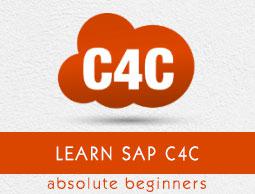SAP C4C - Work Distribution
In SAP C4C, work distribution is used to route the tickets to particular teams or agent queues. By default, all incoming customer service tickets are visible to all business users with the corresponding access rights.
Organizational Work Distribution and Employee Work Distribution enable you to manage the distribution of customer tickets within your service organization. You create rules that allow the system to evaluate the tickets and distribute them to the responsible team or the responsible processing agent.
You can manage the distribution of work within your organization by creating work distribution rules that allow the system to evaluate work items and to determine the organization unit responsible for these work items. Depending on the work category, the system directs the work items to the determined organization unit, or provides the organization unit as a proposal in the relevant business document.
For each work category listed below, you can create one or more rules. If you do not create any rules for a given work category, all corresponding work items are subject to the global work assignment. You can find additional details about each work category in the related document in the Help Center.
Create Work Distribution
Following are the steps to perform work distribution.
Step 1
To perform work distribution, go to Administration → Organization Work Distribution

Step 2
Navigate to Service and support team for service requests - Social Media. You can do organizational work distribution for service and support team for service request ticket from social media channel.
You can also perform Organizational work distribution for sales unit for sales transaction and leads for marketing unit.

The table shows the work distribution for the selected work category. The work is assigned to each organization unit based on a prioritized list of rules. The priority allows the system to evaluate the rules from 1 to N to determine a first match whenever a work item needs to be assigned to an organization unit. This first match is only returned. The system does not evaluate beyond the first match.

Step 3
Navigate to Edit option.

Step 4
You can edit the rules associated with the selected work category. Each rule displays its name and the organizational unit that is responsible for the work contained in the work category. You can display all changes made to the rules in the Changes view.
If you change a rule that begins before the effective date, this rule will be delimited from the day before the effective date. A new rule will be created by the system with the same values and changes already entered by you. This new rule is then applicable from the effective date.

Step 5
You can create a new rule here. Click Add Rule.
You have options −
Add Rule − To create new rule,
Insert Rule − To insert the existing rule.
Delete Rule − To delete the existing rule.
Copy Rule − To copy an existing rule.

Step 6
Enter the name of the Rule. Example- Test-Now.

Step 7
Select the desired Organization unit.

Step 8
The next step is to enter the condition. You can have multiple options for entering the conditions to make a Rule. Like customer category, Country, Product category, service category, account, service priority code, escalation status, Channel type, Channel.
You can select channel type and select Social media channel. That means all the tickets from Social media will directly go to the Sales Department organization unit.

Step 9
Click the Check button. It will check for any inconsistency. Click Save.














